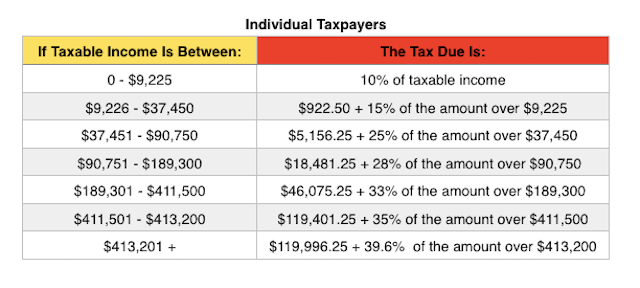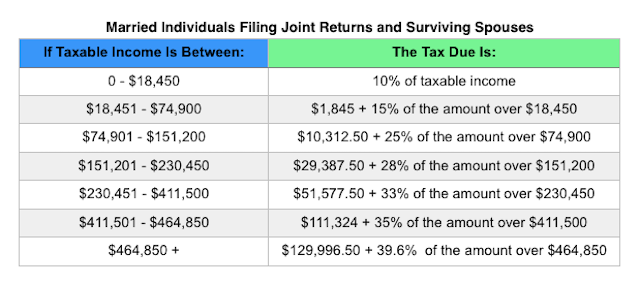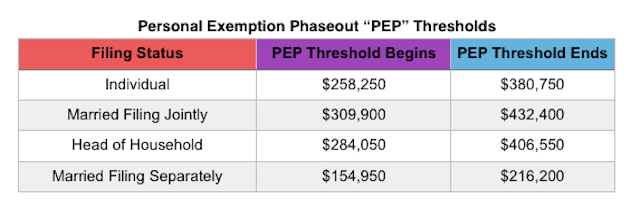More Capital Gains Distortions
The article written by Josh Zumbrun of the Wall Street Journal on December 31, entitled, “Tax Rate for Top 400 Taxpayers Climbed in 2013,” should have been fairly straightforward with interesting data on that particular tax demographic. Unfortunately, the author distorts some aspects of the tax code, which makes the article a bit suspect and disappointing.
Zumbrun begins by gleefully announcing that “Tax rates on the 400 wealthiest Americans in 2013 rose to their highest average since the 1990s, after policy changes that boosted levies on capital gains and dividends.”
Here’s the first major problem. Tax rates may have risen in 2013 — but not because of rate increases on capital gains and dividends; several other tax changes also affecting the wealthy happened due to the Fiscal Cliff negotiations. Some of these include 1) The top marginal rate increased from 35 percent to 39.6 percent; 2) a phase out of personal exemptions; 3) a phase down of itemized deductions; 4) an increase in the death tax.
However, the author fails to mention those in an attempt to focus solely on capital gains.
This is especially evident in his next section. “Over the years, these taxpayers have devised strategies to collect more of their income as capital gains—profits from the sale of property or an investment—and dividends.” Unfortunately, the author has a total lack of understanding of capital gains. He erroneously, like many others, writes as though capital gains are income and thus lumps capital gains discussions together with income discussions. But that distorts the tax picture and tax strategy.
Capital gains are unusual in that the taxpayer has the ultimate decision as to whether and when to sell his asset (stock, his business, a work of art, etc.) The higher the tax rate, the LESS likely he is to sell, seeing as he will only be able to enjoy or reinvest what is left of the proceeds AFTER TAX. History has borne this out – capital gains tax collections go down in the periods after increases, and go up in the years after decreases.
The actual impact of raising the capital gains rate is also devastating to the economy. By discouraging the sale of assets, there is reduced capital available for new projects and opportunities, reducing job creation and wages, and resulting in lower revenue collection.
Furthermore, with higher capital gain rates, the expected after tax rate of return on new projects will go down, assuring that fewer of them will go forward.
But none of this seems to matter to the author. By alluding to “strategies to collect more income as capital gain profits” and describing how, with impending rate increases, “many of the highest earners sold assets before the deadline to avoid higher taxes, leading to a huge surge in income in late 2012,” the author is subtly suggesting that these actions are somehow wrong, underhanded, or unfair.
Juxtaposing that with his opening statement about how tax rates rose on the wealthiest Americans in 2013, the author seems to be dipping his toes into the class warfare playbook of “taxing higher income earners more is a good.”
This becomes readily apparent in the second half of the article, where the author brings up how the “capital-gains rate has become a prominent feature of 2016 presidential candidates’ tax proposals” — pointing out that top Republican candidates such as Cruz or Rubio would seek to lower the rates.
He also helpfully includes quotes about the wealthy and capital gains, and all the tax revenue they bring in. ““It’s not chump change,” said Len Burman, director of the Tax Policy Center, a nonpartisan think tank. Capital-gains taxes bring in more than $100 billion in some years “and almost all of it is realized by people with very high incomes,” he said. In 2013, the 400 households earned 5.3% of all dividend income and 11.2% of all income from sales of capital assets.”
Thus, using 2013 as a bellweather year for higher tax rates for the wealthy, the author tries to correlate it with capital gains — in order to suggest to the reader that higher capital gains taxes on the wealthy is an economic good. This is where he is woefully incorrect. What could have been an interesting article was sprinkled economic ignorance and a subtle agenda.







